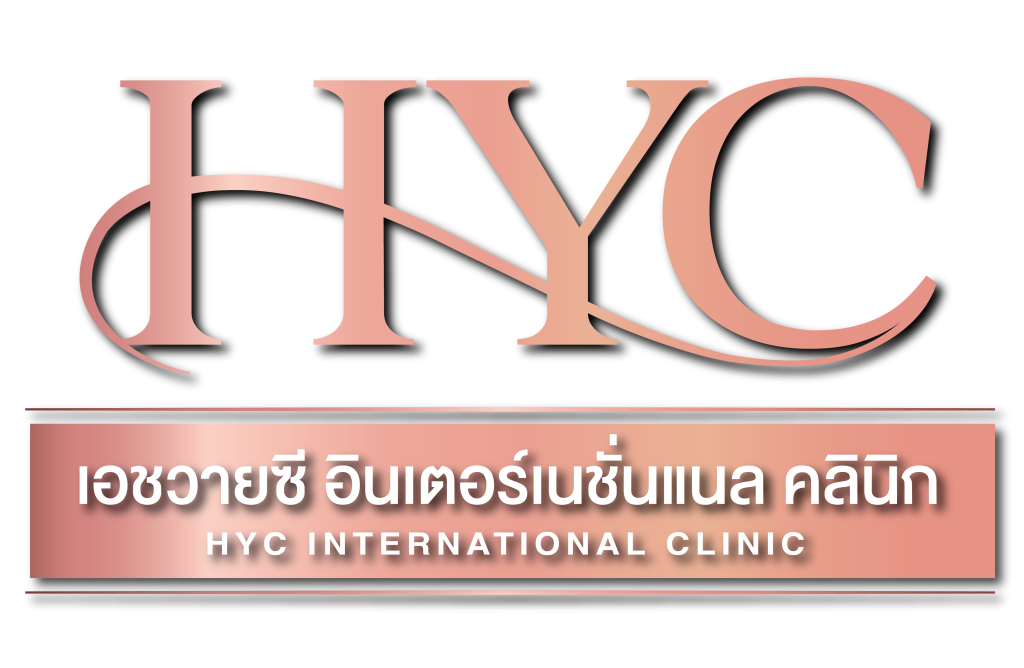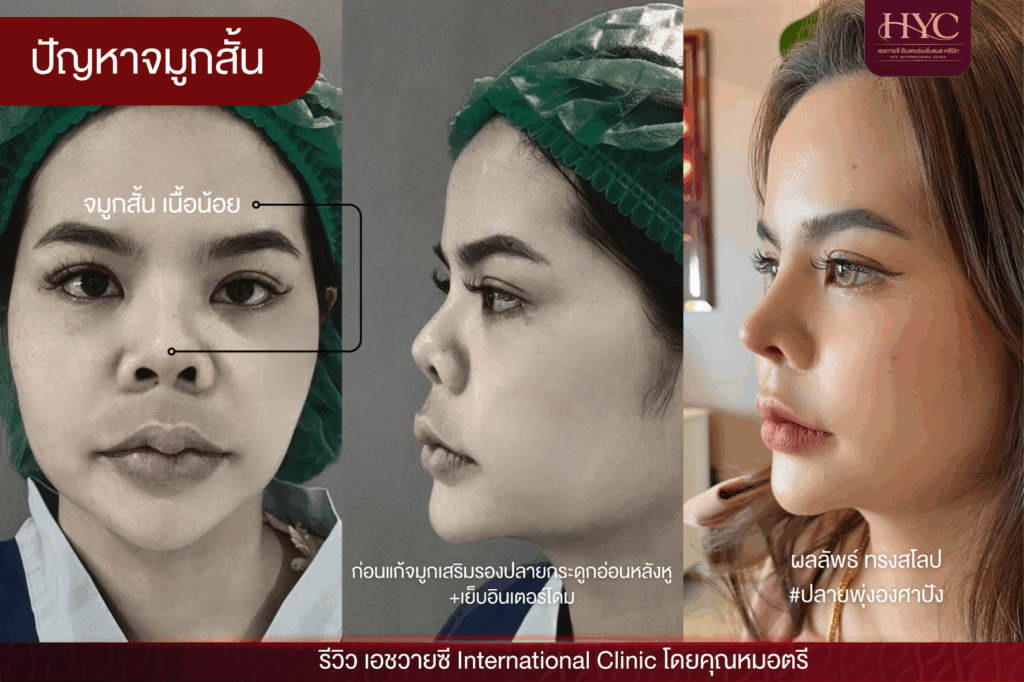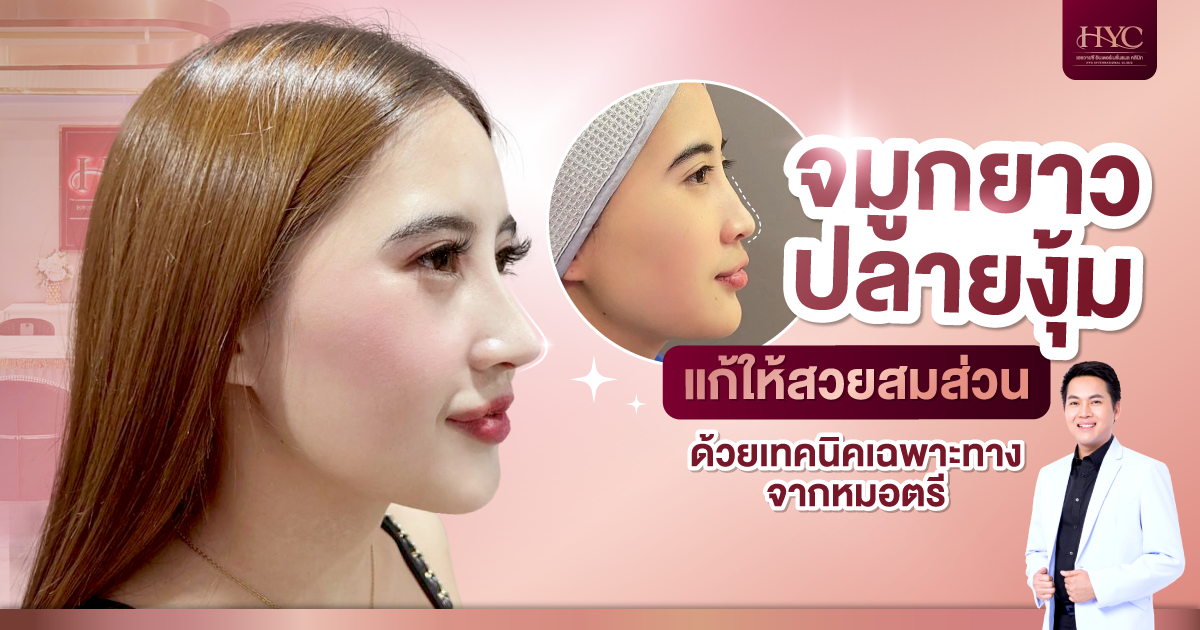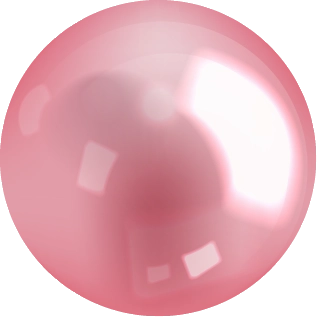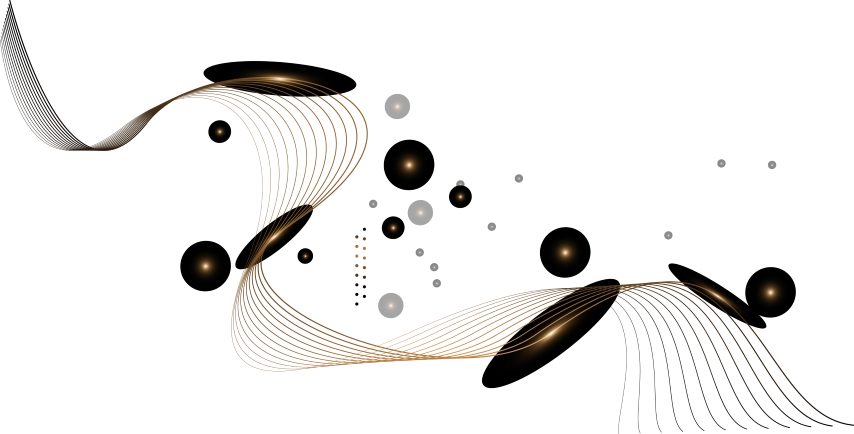Understanding a Short Nose
A short nose refers to a nose that appears disproportionately short compared to overall facial proportions. This often results in a lack of facial harmony, making the face appear less refined or overly upturned—sometimes revealing the nostrils too prominently. Such characteristics can affect one’s confidence and facial balance.
From an aesthetic perspective, the ideal facial structure can be divided into three equal vertical sections:
-
From the forehead to the eyebrows
-
From the eyebrows to the tip of the nose
-
From the tip of the nose to the chin
If the length of the nose is significantly shorter than one-third of the face, it may be classified as a short nose.
Causes of a Short Nose
1. Genetics
Some individuals are born with naturally short nasal cartilage or underdeveloped nasal bone structure, resulting in a shorter-looking nose.
2. Naturally Upturned Nasal Tip
In some cases, the nasal tip is naturally upturned, making the nose appear shorter and nostrils more visible—impacting facial aesthetics.
3. Complications from Previous Surgery
A short nose can also result from improper rhinoplasty, such as using implants that are too short or overly tightening the nasal tip, leading to an undesirable shape post-surgery.
Solutions for a Short Nose
Correcting a short nose typically requires surgical intervention tailored to each individual’s anatomy and condition. The main goal is to lengthen the nasal tip and reduce the upturned appearance to achieve a more balanced profile.
1. Septal Extension Graft
-
Principle: This is the primary method for correcting short noses. It involves harvesting cartilage from another part of the body—commonly the nasal septum (preferred), ear cartilage, or rib cartilage—and grafting it to the tip of the nasal septum. This forms a structural base to lengthen and support the nasal tip.
-
Best for: Individuals with significantly short and upturned noses.
-
Considerations: This is a complex procedure that requires a highly experienced surgeon and careful selection of graft material.
2. Tip Grafting
-
Principle: Cartilage is grafted directly to the nasal tip to enhance length and shape, giving a more refined or “droplet-shaped” appearance.
-
Best for: Those needing only a minor increase in length and tip refinement.
-
Considerations: Often combined with septal extension grafts for optimal results.
3. Implant Adjustment (for patients with prior surgery)
-
Principle: If a short nose resulted from a previous implant being too small or misaligned, the surgeon may remove and replace it with a more suitable one. This may be combined with septal extension techniques.
-
Best for: Patients with a history of rhinoplasty and unsatisfactory short nose outcomes.
4. Scar Tissue Release (in select cases)
-
Principle: For individuals with internal scar tissue causing nasal retraction, the surgeon may release the fibrous tissue and reposition the soft tissues to allow for better nasal extension.
-
Best for: Patients whose previous rhinoplasty led to internal scarring and nasal shortening.
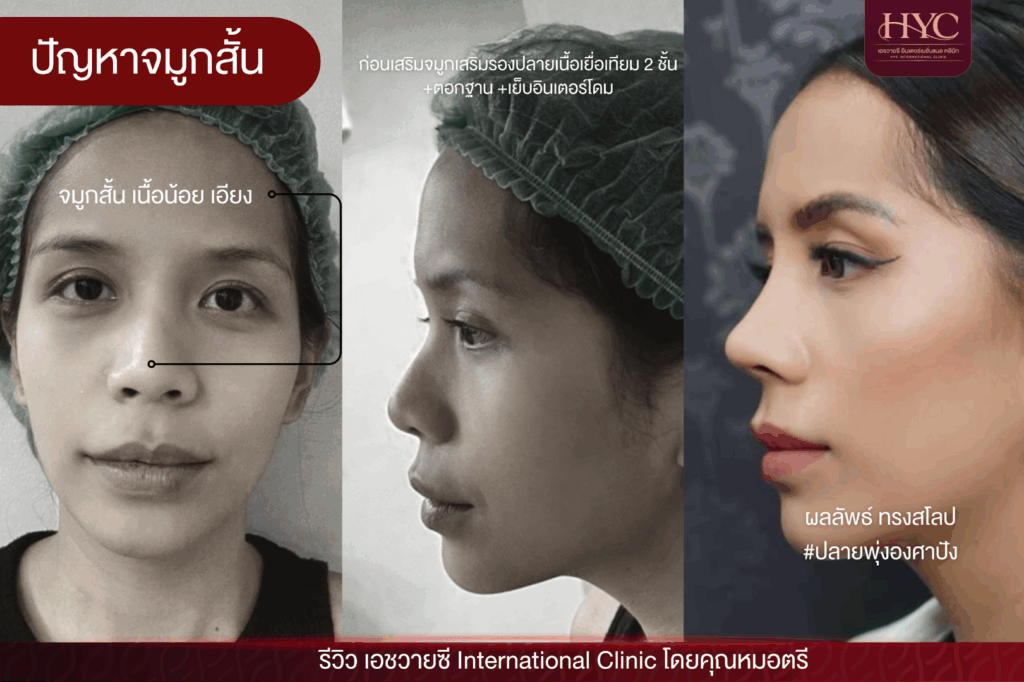
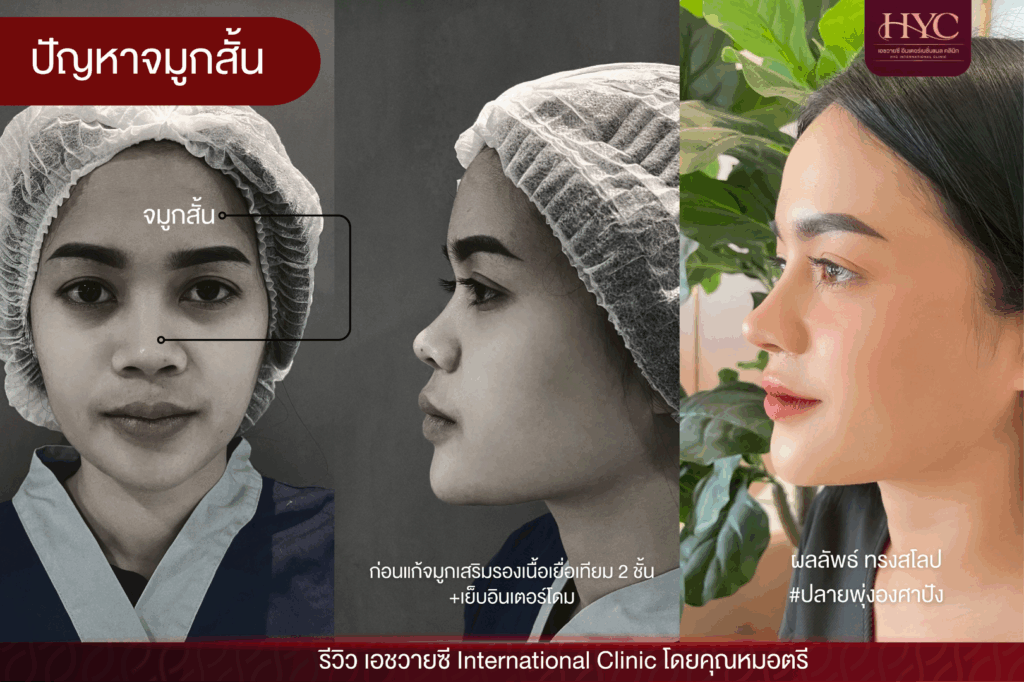
Key Considerations Before Surgery
Consult an Experienced Specialist
Corrective short nose surgery is complex and requires a surgeon with extensive experience in advanced rhinoplasty. A specialist will thoroughly assess your nasal and facial structure and recommend the most appropriate technique.
Manage Your Expectations
Have an open discussion with your surgeon about what results are realistically achievable. Understand the limitations and set healthy expectations.
Risks and Complications
As with any surgery, there are potential risks such as infection, bruising, breathing difficulties, asymmetry, or unsatisfactory aesthetic results. Make sure to discuss these in detail with your surgeon.
Recovery Period
Recovery from short nose correction surgery takes time. Swelling typically subsides over 3–6 months, but full results may take up to a year to become fully refined.
Important Information to Know
Corrective short nose surgery is more complex than standard rhinoplasty. It often involves reconstructing structural components using the patient’s own cartilage, which requires advanced surgical skill and meticulous planning.
Because of the complexity and potential risks, it’s essential to gather comprehensive information, understand the procedure fully, and select a surgeon with specialized expertise in revision or complex rhinoplasty.
Conclusion
Correcting a short nose is a significant investment in both time and cost. Choosing the right surgeon and preparing thoroughly are key to achieving a safe and satisfying result. We highly recommend seeking multiple opinions, researching thoroughly, and making a well-informed decision to ensure the best possible outcome.
